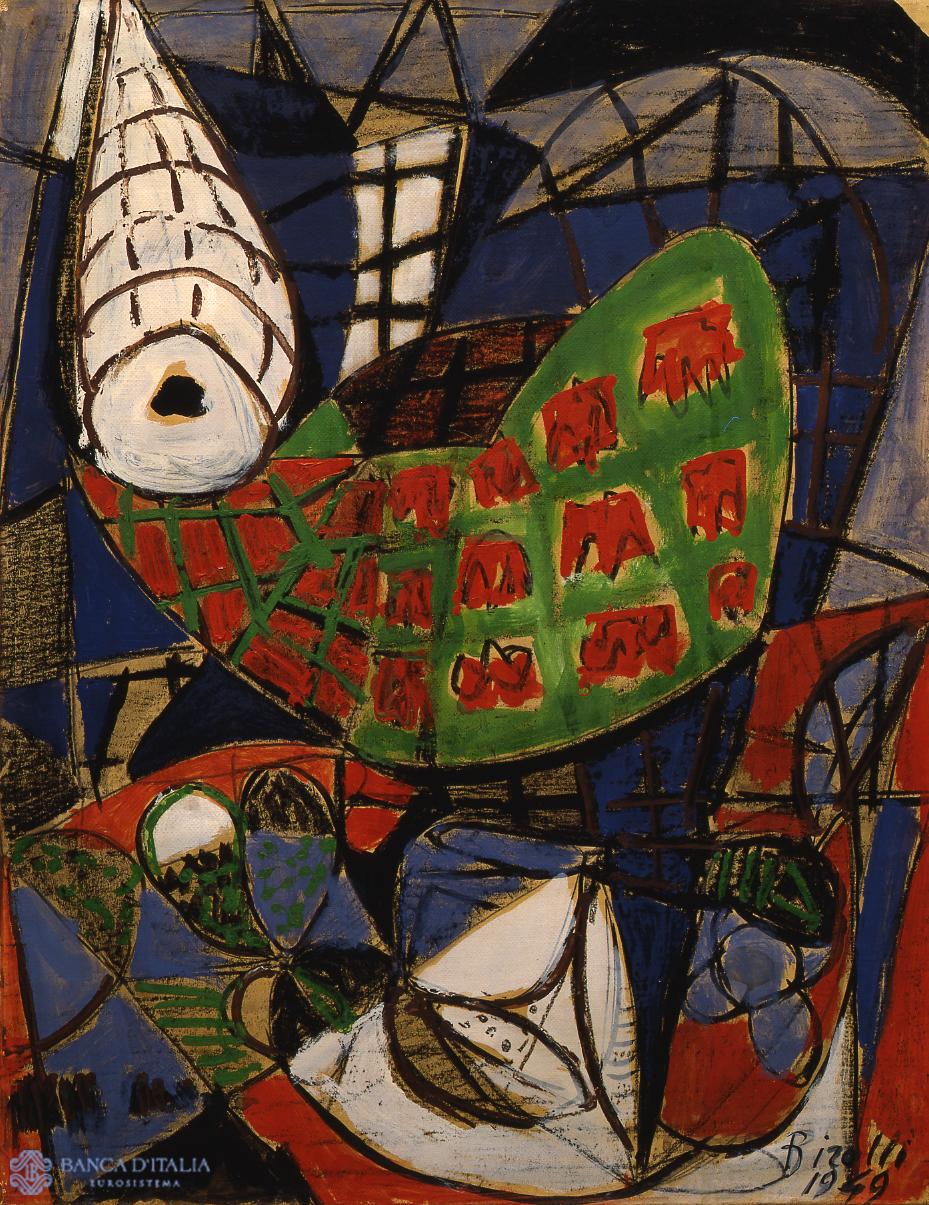Renato Birolli was born in Verona in December 1905. Expelled from the local Academy in 1927, he moved to Milan, where he met Carlo Carrà and became the co-editor of L’Ambrosiano (this marked the beginning of an unbroken, at times exclusively private, practice of writing and criticism). He became close to Giacomo Manzù and Aligi Sassu, with whom he exhibited in 1932, along with Mario Mafai and Renato Guttuso. In 1937 in Paris he met Lionello Venturi, who introduced him to the work of Cézanne: it was a lesson that Birolli would never forget. Back in Milan, he wrote for Corrente, held his first one-man show and exhibited at the Premio Bergamo, where his work earned him an award. He was arrested by the Fascist police on several occasions and fought in the Resistance.
In the post-war period, he was one of the promoters of Fronte Nuovo delle Arti, the first group of Italian artists who aspired to renew tradition based on a desire to open up to Europe. He was also one of the first, most convinced and motivated painters to embrace a neo-cubist style initially tinged with expressionism, later becoming more formalized. When the Fronte broke up he worked with Afro in particular to form a new group headed by Venturi, the Group of Eight – named after the number of its members. The group presented a united front at the 1952 Venice Biennale, and went on to interpret the “abstract-concrete” style in various ways. This was a path embraced by most Italian painters for years to come, in opposition both to socialist realism and to the more radical forms of abstract art.
Towards the mid-1950s, Birolli’s cubist syntax gave way to a freer gestural art and a new focus on materials – a style that had some affinity with the then dominant Informal atmosphere.
Renato Birolli died suddenly in Milan in 1959.
Renato Birolli
Renato Birolli (Verona 1905 - Milan 1959)
20th century AD


